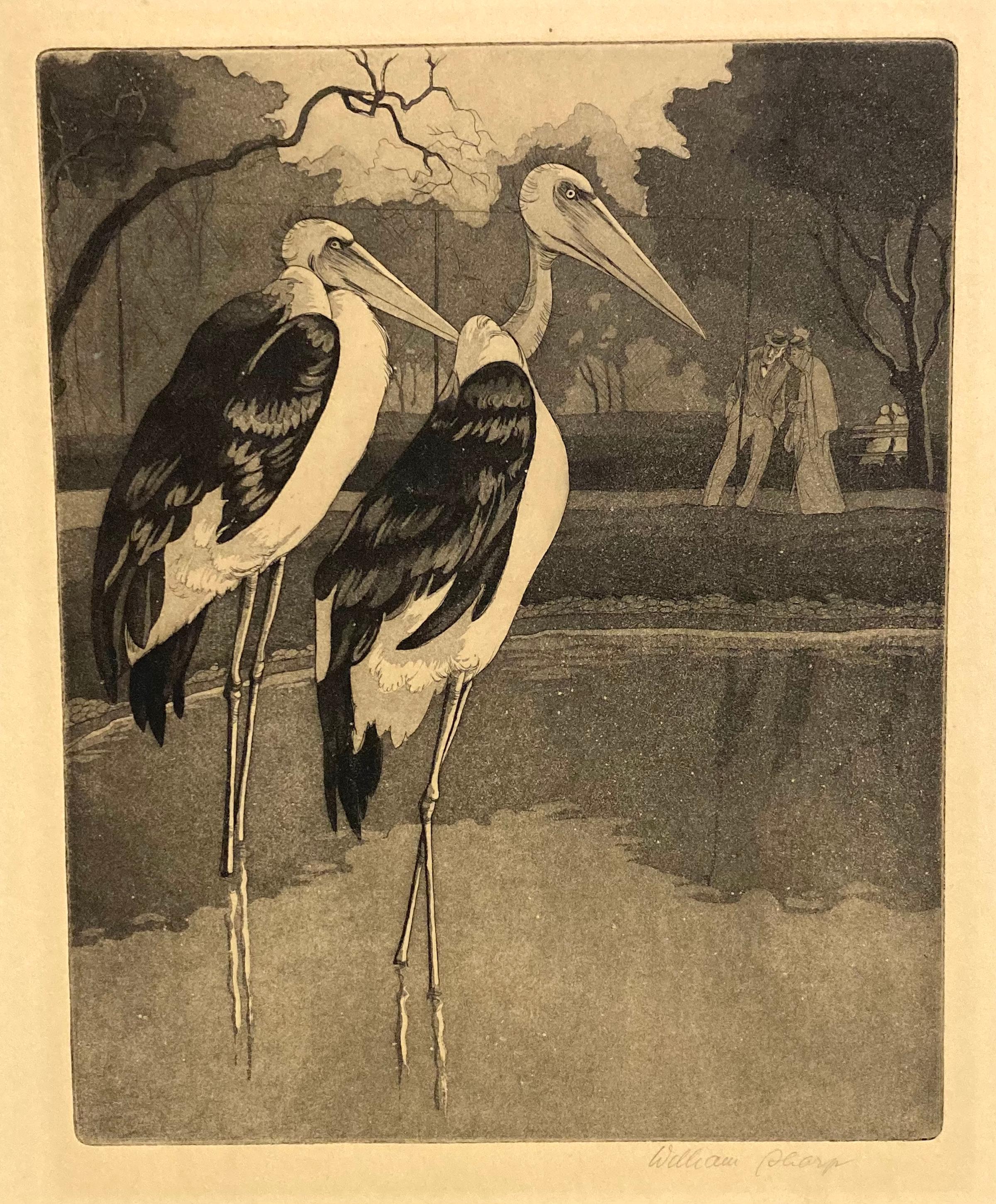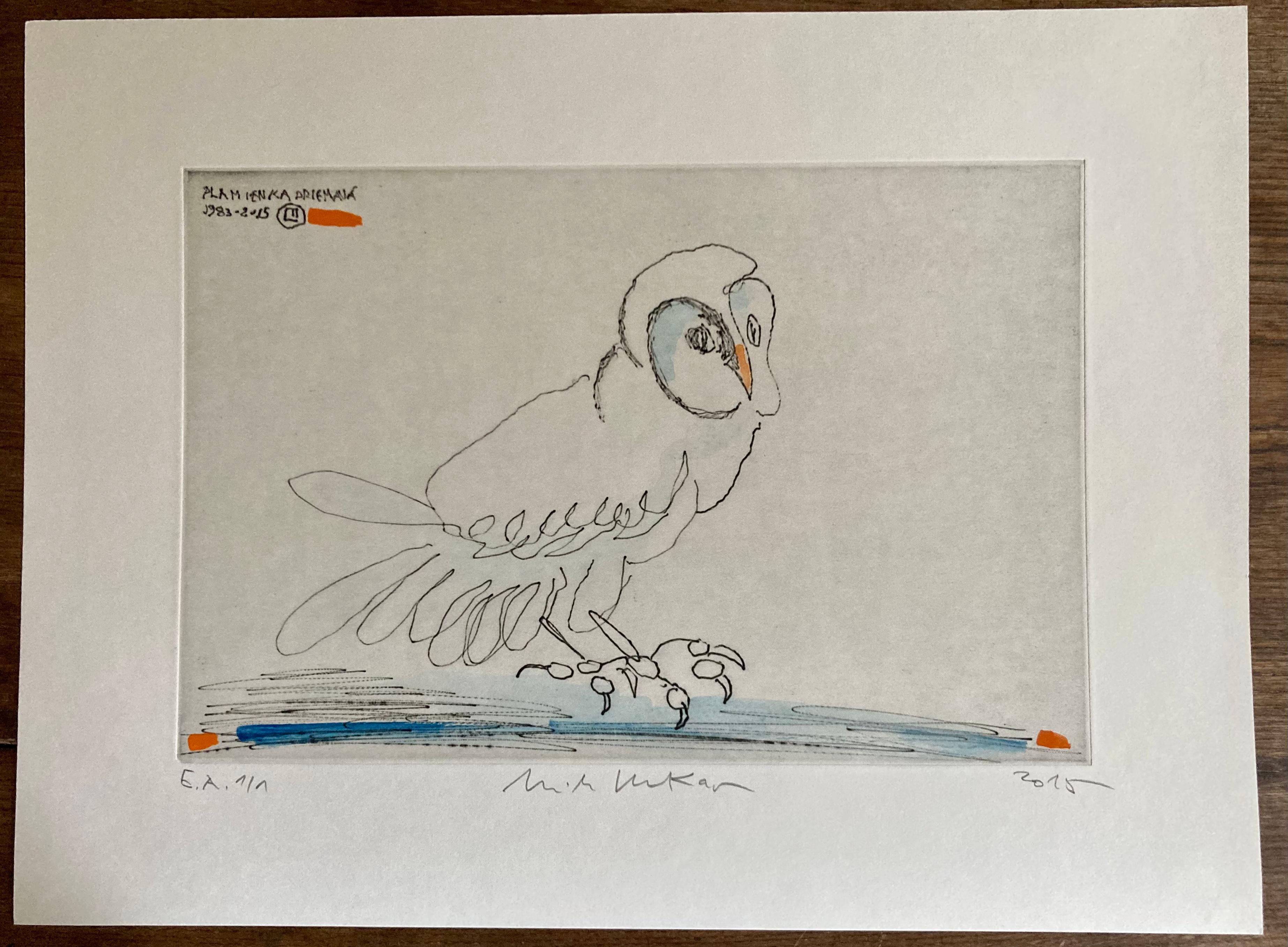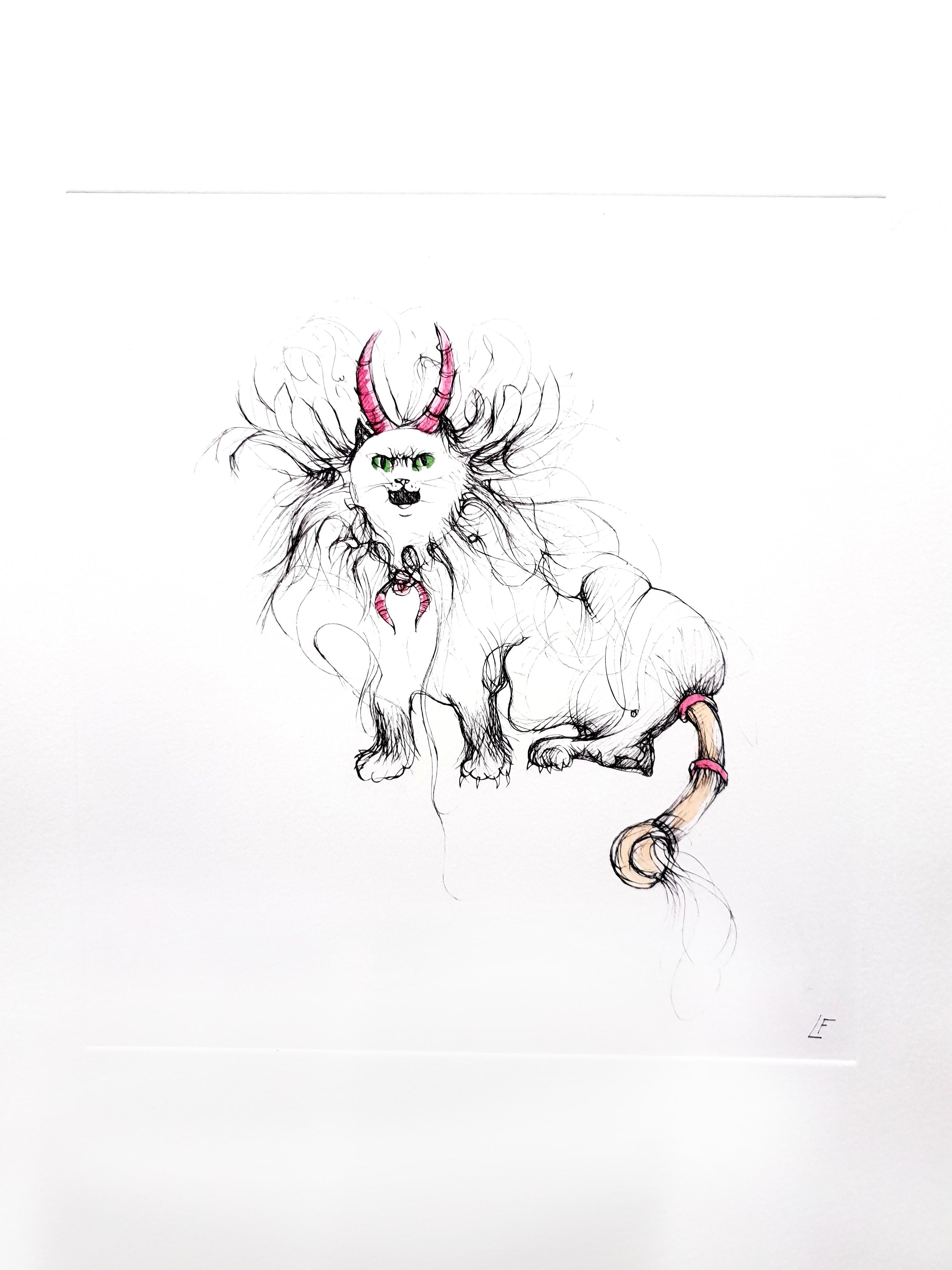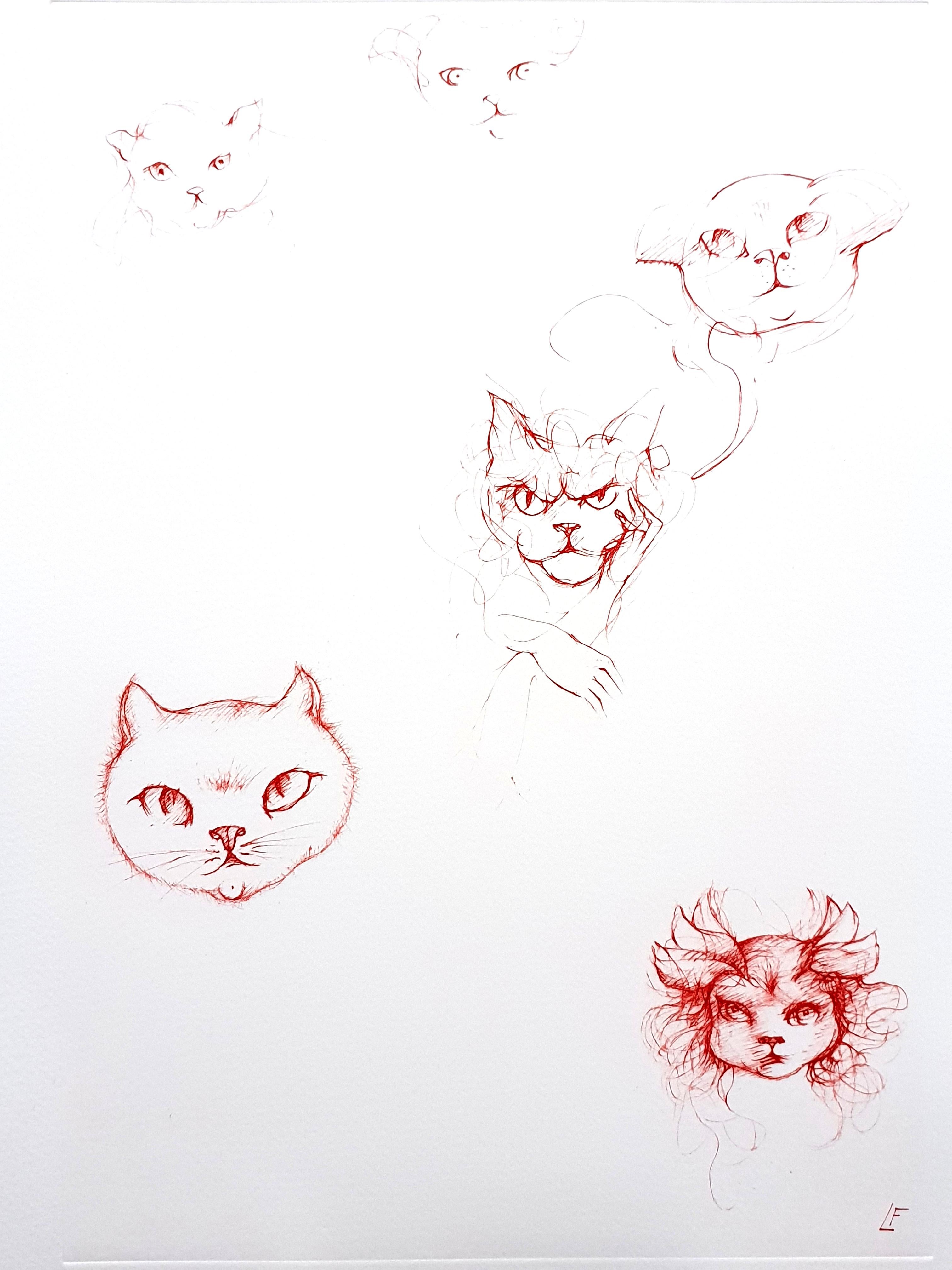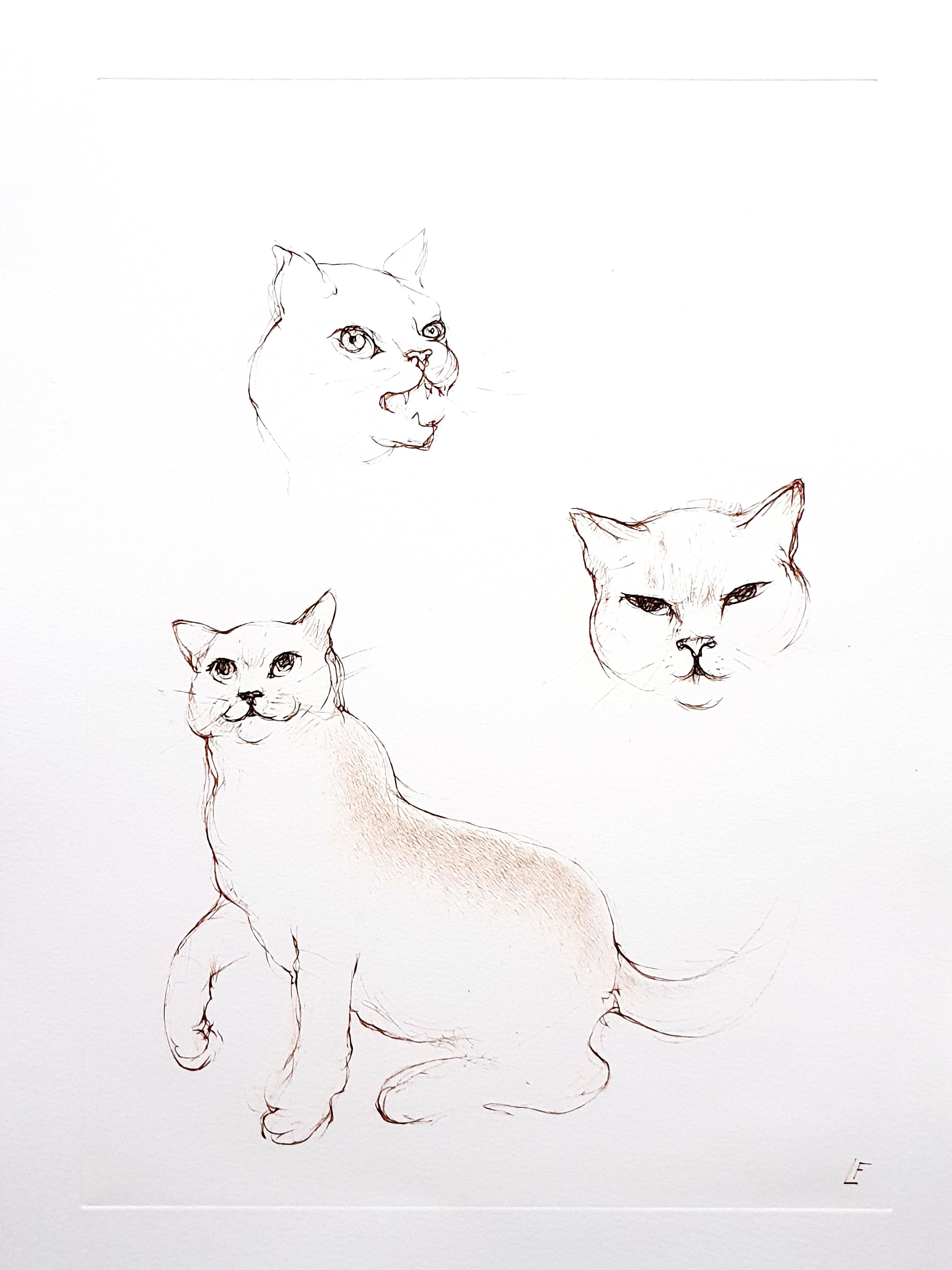Items Similar to Bulldog and Woman - Original Handsigned Etching
Want more images or videos?
Request additional images or videos from the seller
1 of 11
Pierre-Yves TrémoisBulldog and Woman - Original Handsigned Etching1974
1974
About the Item
Pierre-Yves TREMOIS
Bulldog and Woman, 1974
Original etching
Handsigned in pencil
Justified EA or numbered / 80
On vellum 76 x 56 cm (c.30 x 22 inch)
Excellent condition
- Creator:Pierre-Yves Trémois (1921 - 1994, French)
- Creation Year:1974
- Dimensions:Height: 29.93 in (76 cm)Width: 22.05 in (56 cm)
- Medium:
- Movement & Style:
- Period:
- Condition:
- Gallery Location:Paris, FR
- Reference Number:1stDibs: LU464314031052
About the Seller
4.9
Platinum Seller
These expertly vetted sellers are 1stDibs' most experienced sellers and are rated highest by our customers.
Established in 2010
1stDibs seller since 2016
3,247 sales on 1stDibs
Typical response time: 1 hour
- ShippingRetrieving quote...Ships From: Paris, France
- Return PolicyA return for this item may be initiated within 7 days of delivery.
More From This SellerView All
- Fables : The Frog and the Beef - Original etching - 1952By Marc ChagallLocated in Paris, FRMarc Chagall Fables : The Frog and the Beef Original etching Printed signature in the plate On vellum 31 x 24 cm at view (c. 12 x 10 in) Presented in tinted aluminium...Category
1950s Modern Animal Prints
MaterialsEtching
- Pisa Tower and Apple - Original handsigned black-manner etching - 100 copiesBy Mario AvatiLocated in Paris, FRMario AVATI Pisa Tower and Apple Original black manner etching Handsigned in pencil Numbered / 100 copies On BFK Rives vellum 30 x 19.5 cm (c. 12 x 8 in) ...Category
1970s Modern Animal Prints
MaterialsEtching
- The Dove - Original handsigned black-manner etching - 100 copiesBy Mario AvatiLocated in Paris, FRMario AVATI The Dover Original black manner etching Handsigned in pencil Numbered / 100 copies On BFK Rives vellum 30 x 19.5 cm (c. 12 x 8 in) Excellent conditionCategory
1970s Modern Animal Prints
MaterialsEtching
- Woman Riding a Dove - Original handsigned black-manner etching - 100 copiesBy Mario AvatiLocated in Paris, FRMario AVATI Woman Riding a Dove Original black manner etching Handsigned in pencil Numbered / 100 copies On BFK Rives vellum 30 x 19.5 cm (c. 12 x 8 in) Excellent conditionCategory
1970s Modern Animal Prints
MaterialsEtching
- Playing Cat - Original handsigned black-manner etching - 100 copiesBy Mario AvatiLocated in Paris, FRMario AVATI Playing Cat Original black manner etching Handsigned in pencil Numbered / 100 copies On BFK Rives vellum 30 x 19.5 cm (c. 12 x 8 in) Excellent conditionCategory
1970s Modern Animal Prints
MaterialsEtching
- Couple of Owls - Original handsigned black-manner etching - 100 copiesBy Mario AvatiLocated in Paris, FRMario AVATI Couple of Owls Original black manner etching Handsigned in pencil Numbered / 100 copies On BFK Rives vellum 30 x 19.5 cm (c. 12 x 8 in) Excellent conditionCategory
1970s Modern Animal Prints
MaterialsEtching
You May Also Like
- William Sharp, Lincoln Park Marabous (probably Chicago)By William SharpLocated in New York, NYWilliam Sharp, largely known as a court reporter, was based in New York City. Probably this scene of Lincoln Park Marabous is Chicago. There are several ...Category
Mid-20th Century American Modern Animal Prints
MaterialsEtching
- Christian Ludwig Martin, GeeseLocated in New York, NYChristian Ludwig Martin worked in Vienna. He was an artist, illustrator, and art teacher. 'Geese' is titled in German, and titled and signed in pencil. It is on a large sheet. While ...Category
1920s Modern Animal Prints
MaterialsEtching
- Owl - Plamienka driemaváLocated in Slovak Republic, SKEtching on fine art paper, E.A. 1/1 from the cycle " Botanical Dream Nr. 11", presented in the Danubiana Meulenstein Art Museum in Bratislava/2021..Category
21st Century and Contemporary Modern Animal Prints
MaterialsEtching
- Leonor Fini - Magical Cat - Original EtchingBy Leonor FiniLocated in Collonge Bellerive, Geneve, CHLeonor Fini - Cats - Original Engraving Mme.Helvetius' Cats Original etching created in 1985, Printed Signature (LF). Conditions: excellent Edition: 100 Support: Arches paper. Dimensions: Paper dimensions: 44 x 28 cm Editions: Moret, Paris. Leonor Fini is considered one of the most important women artists of the mid-twentieth century, along with Leonora Carrington, Frida Kahlo, Meret Oppenheim, Remedios Varo, and Dorothea Tanning – most of whom Fini knew well. Her career, which spanned some six decades, included painting, graphic design, book illustration, product design (the renowned torso-shaped perfume bottle for Schiaparelli’s Shocking), and set and costume design for theatre, ballet, opera, and film. In this compellingly readable, exhaustively researched account, author Peter Webb brings Fini’s provocative art and unconventional personal life, as well as the vibrant avant-garde world in which she revolved, vividly in life. Born in Buenos Aires in 1907 (August 30 – January 18, 1996, Paris) to Italian and Argentine parents, Leonor grew up in Trieste, Italy, raised by her strong-willed, independent mother, Malvina. She was a virtually self-taught artist, learing anatomy directly from studying cadavers in the local morgue and absorbing composition and technique from the Old Masters through books and visits to museums. Fini’s fledging attempts at painting in Trieste let her to Milan, where she participated in her first group exhibition in 1929, and then to Paris in 1931. Her vivacious personality and flamboyant attire instantly garnered her a spotlight in the Parisian art world and she soon developed close relationships with the leading surrealist writers and painters, including Paul Eluard, Salvador Dali, Man Ray, and Max Ernst, who became her lover for a time. The only surrealist she could not abide because of his misogyny was André Breton. Although she repeatedly exhibited with them, she never considered herself a surrealist. The American dealer Julien Levy, very much impressed by Fini’s painting and smitten by her eccentric charms, invited her to New York in 1936, where she took part in a joint gallery exhibition with Max Ernst and met many American surrealists, including Joseph Cornell and Pavel Tchelitchew. Her work was included in MoMA’s pivotal Fantastic Art, Dada and Surrealism exhibition, along with De Chirico, Dali, Ernst, and Yves Tanguy. In 1939 in Paris she curated an exhibition of surrealist furniture for her childhood friend Leo Castelli for the opening of his first gallery. Introductions to her exhibition catalogues were written by De Chirico, Ernst, and Jean Cocteau. A predominant theme of Fini’s art is the complex relationship between the sexes, primarily the interplay between the dominant female and the passive, androgynous male. In many of her most powerful works, the female takes the form of a sphinx, often with the face of the artist. Fini was also an accomplished portraitist; among her subjects were Stanislao Lepri...Category
1980s Modern Animal Prints
MaterialsEtching
- Leonor Fini - Red Cats - Original EtchingBy Leonor FiniLocated in Collonge Bellerive, Geneve, CHLeonor Fini - Cats - Original Engraving Mme.Helvetius' Cats Original etching created in 1985, Printed Signature (LF). Conditions: excellent Edition: 100 Support: Arches paper. Dimensions: Paper dimensions: 44 x 28 cm Editions: Moret, Paris. Leonor Fini is considered one of the most important women artists of the mid-twentieth century, along with Leonora Carrington, Frida Kahlo, Meret Oppenheim, Remedios Varo, and Dorothea Tanning – most of whom Fini knew well. Her career, which spanned some six decades, included painting, graphic design, book illustration, product design (the renowned torso-shaped perfume bottle for Schiaparelli’s Shocking), and set and costume design for theatre, ballet, opera, and film. In this compellingly readable, exhaustively researched account, author Peter Webb brings Fini’s provocative art and unconventional personal life, as well as the vibrant avant-garde world in which she revolved, vividly in life. Born in Buenos Aires in 1907 (August 30 – January 18, 1996, Paris) to Italian and Argentine parents, Leonor grew up in Trieste, Italy, raised by her strong-willed, independent mother, Malvina. She was a virtually self-taught artist, learing anatomy directly from studying cadavers in the local morgue and absorbing composition and technique from the Old Masters through books and visits to museums. Fini’s fledging attempts at painting in Trieste let her to Milan, where she participated in her first group exhibition in 1929, and then to Paris in 1931. Her vivacious personality and flamboyant attire instantly garnered her a spotlight in the Parisian art world and she soon developed close relationships with the leading surrealist writers and painters, including Paul Eluard, Salvador Dali, Man Ray, and Max Ernst, who became her lover for a time. The only surrealist she could not abide because of his misogyny was André Breton. Although she repeatedly exhibited with them, she never considered herself a surrealist. The American dealer Julien Levy, very much impressed by Fini’s painting and smitten by her eccentric charms, invited her to New York in 1936, where she took part in a joint gallery exhibition with Max Ernst and met many American surrealists, including Joseph Cornell and Pavel Tchelitchew. Her work was included in MoMA’s pivotal Fantastic Art, Dada and Surrealism exhibition, along with De Chirico, Dali, Ernst, and Yves Tanguy. In 1939 in Paris she curated an exhibition of surrealist furniture...Category
1980s Modern Animal Prints
MaterialsEtching
- Leonor Fini - Cats - Original EtchingBy Leonor FiniLocated in Collonge Bellerive, Geneve, CHLeonor Fini - Cats - Original Engraving Mme.Helvetius' Cats Original etching created in 1985, Printed Signature (LF). Conditions: excellent Edition: 100 Support: Arches paper. Dimensions: Paper dimensions: 44 x 28 cm Editions: Moret, Paris. Leonor Fini is considered one of the most important women artists of the mid-twentieth century, along with Leonora Carrington, Frida Kahlo, Meret Oppenheim, Remedios Varo, and Dorothea Tanning – most of whom Fini knew well. Her career, which spanned some six decades, included painting, graphic design, book illustration, product design (the renowned torso-shaped perfume bottle for Schiaparelli’s Shocking), and set and costume design for theatre, ballet, opera, and film. In this compellingly readable, exhaustively researched account, author Peter Webb brings Fini’s provocative art and unconventional personal life, as well as the vibrant avant-garde world in which she revolved, vividly in life. Born in Buenos Aires in 1907 (August 30 – January 18, 1996, Paris) to Italian and Argentine parents, Leonor grew up in Trieste, Italy, raised by her strong-willed, independent mother, Malvina. She was a virtually self-taught artist, learing anatomy directly from studying cadavers in the local morgue and absorbing composition and technique from the Old Masters through books and visits to museums. Fini’s fledging attempts at painting in Trieste let her to Milan, where she participated in her first group exhibition in 1929, and then to Paris in 1931. Her vivacious personality and flamboyant attire instantly garnered her a spotlight in the Parisian art world and she soon developed close relationships with the leading surrealist writers and painters, including Paul Eluard, Salvador Dali, Man Ray, and Max Ernst, who became her lover for a time. The only surrealist she could not abide because of his misogyny was André Breton. Although she repeatedly exhibited with them, she never considered herself a surrealist. The American dealer Julien Levy, very much impressed by Fini’s painting and smitten by her eccentric charms, invited her to New York in 1936, where she took part in a joint gallery exhibition with Max Ernst and met many American surrealists, including Joseph Cornell and Pavel Tchelitchew. Her work was included in MoMA’s pivotal Fantastic Art, Dada and Surrealism exhibition, along with De Chirico, Dali, Ernst, and Yves Tanguy. In 1939 in Paris she curated an exhibition of surrealist furniture for her childhood friend Leo Castelli for the opening of his first gallery. Introductions to her exhibition catalogues were written by De Chirico, Ernst, and Jean Cocteau. A predominant theme of Fini’s art is the complex relationship between the sexes, primarily the interplay between the dominant female and the passive, androgynous male. In many of her most powerful works, the female takes the form of a sphinx, often with the face of the artist. Fini was also an accomplished portraitist; among her subjects were Stanislao Lepri...Category
1980s Modern Animal Prints
MaterialsEtching
